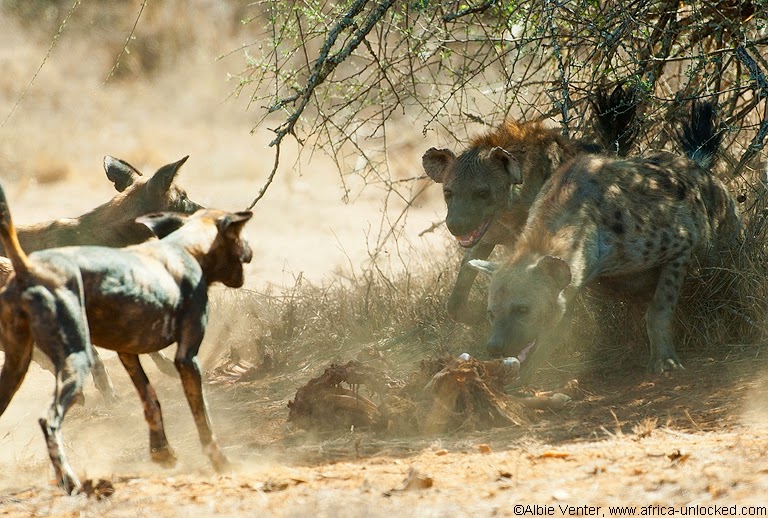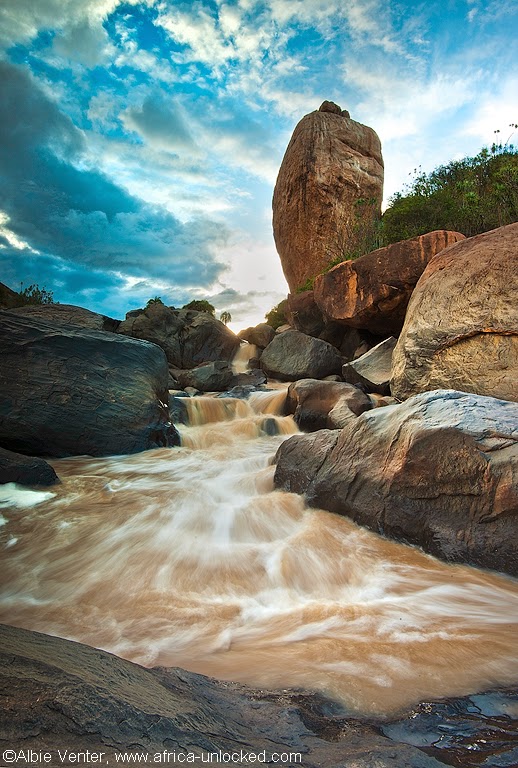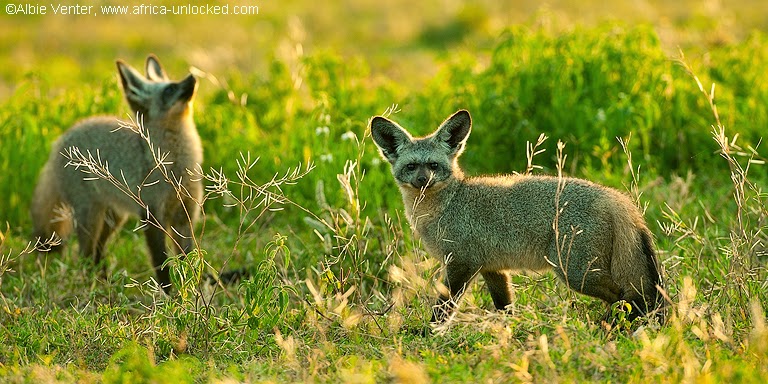 |
| The young dogs playing in front of us as we lie on the ground amongst the pack. |
Dedicated Photographic trips are escalating and what’s really amazing is the amount of photographers who are almost immediately enquiring and even booking their next trip to the area after spending time with Wilddogs. During October the dogs denned in an area which, although inaccessible to see offered great photographic opportunities as the adults left the den.
 |
| The dogs can be really difficult to locate though. But overlooking the Laikipia bush with Mount Kenya in the distance it somehow becomes quite "Tolerable". |
Thus most days during our safaris we were able to follow the pack on early morning and late afternoon hunts. Keeping up with them however proved a much more difficult task as the frenzied pack needed to hunt way more than their normal requirements. The reason of course, the growing puppies back at the den. Over the next few month on subsequent trips we eventually picked up the pups, and the action erupted in all earnest. Although the pups joined the adults almost everywhere, they were still incapable of hunting for themselves, thus the action was all over the place.
 |
| A Dikdik head, the only remains of the kill inevitably becomes the pups toy. |
 |
| On a rare occasion finding the dogs in relative open areas, their playful bouts offer really good photographic opportunities. |
 |
| A returning adult is hounded by the begging pups. |
The dense bush of Laikipia often obscured the action but inevitably at some stages we manage to catch up with them in the midst of it all. Ever dynamic nature, the dogs, due to their increased food demands, started incorporating more Impalas in their hunts. This in turn had the effect that the prey remains lasted longer than the little Did dik which formed a large percentage of their kills and attracted more Spotted Hyenas than before. This in turn increased interactions between the species and yes you guessed it. Fantastic action photography.
 |
| Unique and as far as I know the first decent image from Laikipia where Spotted Hyenas forcefully take over a kill from the dogs. |
Although we concentrate heavily on the Wilddogs of the area and as a result often miss out on the other predators, the beauty of the area force one to pause and take it all in.
 |
| One of our sundowner and bush breakfast spots. |
 |
| Cloudless nights offering clear views of our Galaxy. |
 |
| Once you cross the equator you enter the range of one of the specials of the area - Greyish or Vermiculated Eagle-Owl. |
 |
| Although very common in the area Vulturine Guineefowls are quite difficult to photograph. This pair posed icely for us though in some of the most amazing light! |
Contact me here if you would like to join any scheduled trips or have your own private photographic safari arranged.
And here are some extracts of what the guests had to say.
Thanks you for the trip. It was fantastic to do this with you as guide. I am looking since a few years for Wilddogs now I got it. It was really great to see and watch them, these really wild and rare animals and at last I got some of those pictures I want - Great! I really enjoyed this trip with you and am glad I have met you and having you as guide. Each time we found the dogs you put the car in the right position. We also had fun on the trip. I hope to see you soon again, at least Sept/October this year. MK - Germany
Loved the wilddog safari. Much enhanced by your enthusiasm and knowledge. Would love to return for the puppies outing. Hope to do another safari with you sometime. PS: Extra thanks for allowing me to photograph the Vulturine Guineefowl :) P - United Kingdom
Baie dankie weereens vir n buitengewone ervaring. Dankie dat ons die wildehonde en jou entoesiasme rondom die diere kon ervaar. Dankie ook vir jou vriendelikheid, aanmoediging, hulpvaardigheid en mededeelsaamheid. Dit is elke keer vir ons n groot voorreg om saam met jou te reis. Sien erg uit na ons volgende reis deur Afrika saam. W & T - South Africa
After a 15 year wait to see wilddogs this week has surpassed all expectations and any wild dreams I had before I came. As a complete camera nut, your patience and advice has been really appreceated. But most of all a heartfelt thanks for a wonderfully guided trip. Your ability to to put us in ecactly the right place and your knowledge of these wonderful animals has made this a complete joyfull trip and one that sits firmly in my top 3. I really hope that in the future there will be another "Albie" trip to come. SL - United Kingdom
What can we say? Wilddog safari - we certainly had that - it was amazing much more than we could ever have hoped for. Your enthusiasm for these wonderful animals certainly came through. And together with your sense of humour, your warmth in making us feel so welcome - very much appreceated. We would cartainly hope to see you again, whether that be in Laikipia or elsewhere, we do hope so. K&D A - United Kingdom
Thanks Albie. Brilliant Dogs, Jokes no better. Until next year. JM - Scotland











